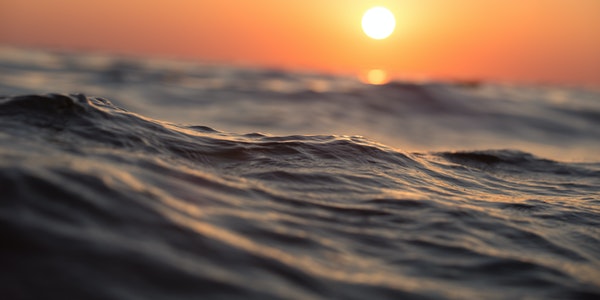Table of Contents
Specific Shooting Articles:
6. give a close-up to the lovely sun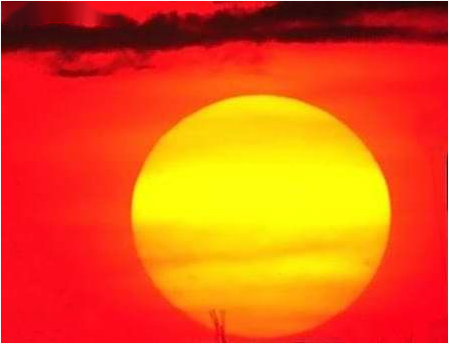
No one stipulates that when shooting sunrise/sunset, there must be clouds involved, nor does it have to be the foreground. A simple and pure sunset or rising sun is just as lovely enough to get into our shots. If your camera has a telephoto lens, lengthen it and let a simple and pure sunset or rising sun become the absolute subject of the picture!
In fact, this picture is also very colorful. A setting sun or rising sun shows a color transition from red to yellow when it is close to the ground, and the surrounding sky also shows a transition from yellow to red, from bright to dark. How can you miss a picture like this? Therefore, when shooting, do not stick to the shooting experience of predecessors. Develop your own personal creativity, maybe there will be unexpected harvests!
7. move, the picture is more exciting!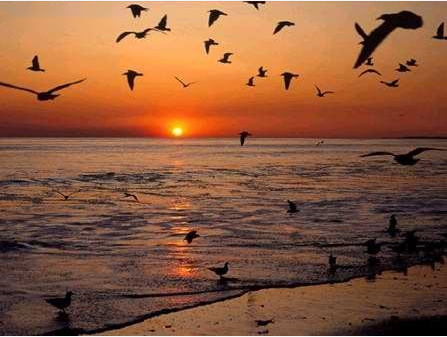
Distant mountains, sunset, colorful clouds… We have seen a lot of sunrise/sunset works that contain these compositional factors. But pay attention, aren’t many photography works with sunrise/sunset themes based on static scenes? Why not add some dynamic scenery to the picture? For example, fishermen casting nets by the water, children playing in the water, and flocks of birds returning late, these dynamic scenes can be added to the picture to make the picture more vivid and exciting.
However, in addition to the objective conditions to capture such a lens, the photographer’s keen observation is also a very important factor. So, we had to use our brains when shooting and capture some creative shots. Many times, a good photographic work is not produced by equipment, but by the photographer’s head behind the camera.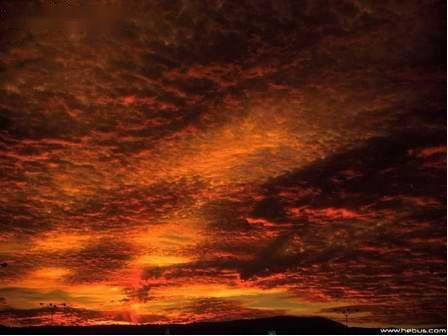
8. The sun is setting in the west, can you call it a day?
The shooting is almost done, and the sun has already sunk behind the distant mountains. Should we also put the lens cap on at this point? Don’t worry, just because the sun can’t appear in the picture doesn’t mean our shooting is over. Sometimes when the sun goes down in the west, that’s when the beautiful fiery clouds start to appear. This is because clouds reflect the sun’s rays more clearly when the sun is below the horizon. At this time, the light is often dim, and the shutter of the camera is often lowered to the point where it cannot be hand-held.
That’s when the tripod we’ve worked so hard to carry can come in handy. The metering selection is aimed at the burning cloud for spot metering. Or when shooting large scenes, use a wide-angle lens (or pull the camera’s focal length to the widest angle), and use average metering to shoot, and you will get good results.
Of course, using manual exposure will get more results, at this time test several combinations of aperture and shutter. Generally speaking, when shooting landscapes, using a small aperture can make the picture more transparent. So, isn’t it a waste to put on the lens cap when the gorgeous fiery clouds fill the sky with a variety of colors?
Post-processing Articles:
1. Photo composition and cropping
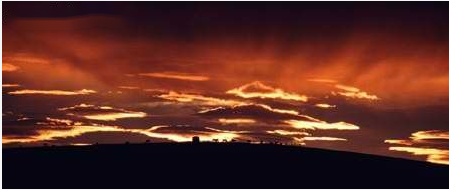
The general photos are taken in 4:3 format, or 3:2 film ratio. These ratios are probably the most commonly used ratios. But for sunrise/sunset landscapes, there may be unexpected surprises in the strip or square ratio.
Of course, cropping loses screen area, and it also makes the photo quality rough. However, it is an effective way to attract the audience’s attention by effectively removing the obstructions of the picture, such as the excessive white sky or the dark earth, and focusing the picture on the places with layers and colors. At the same time, breaking the proportion of traditional composition can also get the effect of “a little red in the green bush”.
Square photos are the most difficult to frame. But they effectively break the rule that the subject cannot be in the center line. I have also seen the framing and placement of the quadrilateral phases in a diamond shape. And the effect is also very attractive. The cutting of the strips effectively makes the audience feel that the captured picture is spacious, and with proper magnification and fine-grained pictures, the audience gets a shocking power of being in the scene. That is difficult to achieve in general square proportions. The commonly used strip ratios range from 1:2 to 1:4, depending on the sky and foreground ratios of the scenic spots.
2. Processing of picture color tone
As mentioned earlier, the reason why digital cameras do not need too many color filters is because the post-processing space of digital photos is very large. The effect obtained by computer processing is often stronger than that of color filters. For example, the processing of the picture below: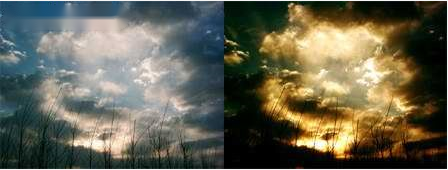
As May is approaching, it is the turn of spring and summer and the perfect time to photograph the sunrise/sunset. Friends who are interested in this article, quickly pick up your own camera to capture this splendid moment!
